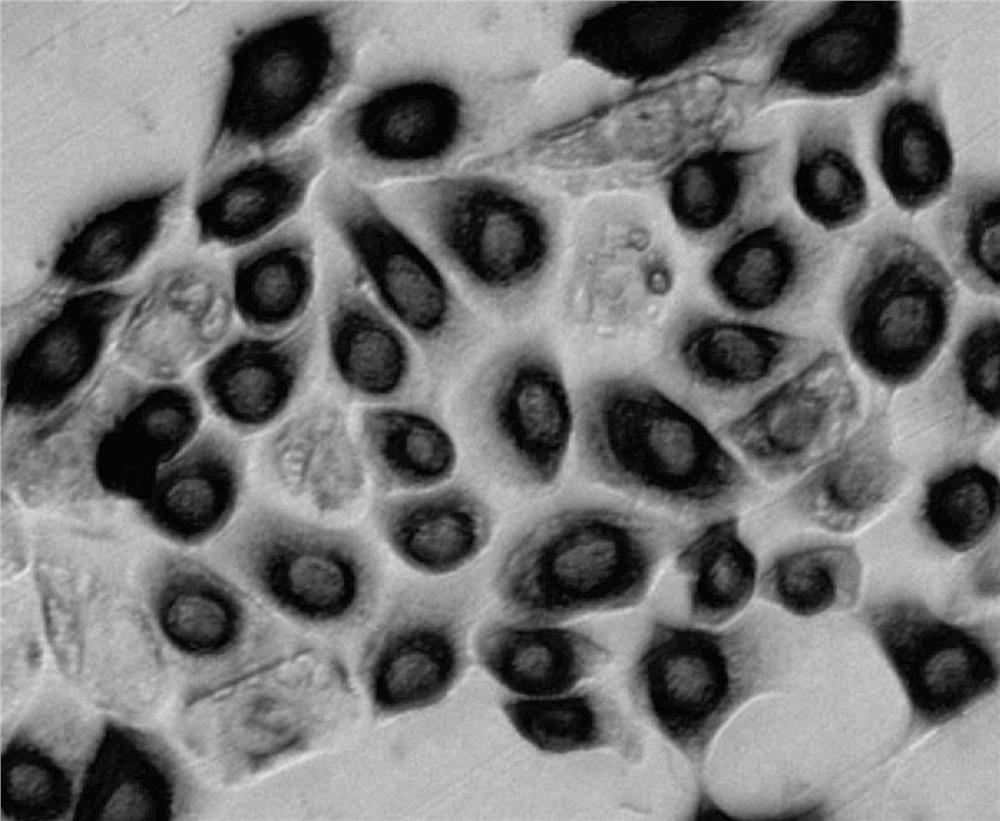A method for constructing tissue-engineered skin with physiological functions
A tissue-engineered skin and construction method technology, applied in the field of tissue-engineered skin construction, can solve the problems of low flexibility, poor elasticity, and easy shedding of the epidermis, and achieve the effects of good compatibility, preventing shrinkage, and promoting hair generation.
- Summary
- Abstract
- Description
- Claims
- Application Information
AI Technical Summary
Problems solved by technology
Method used
Image
Examples
Embodiment 1
[0036]Embodiment 1, the separation and culture of hair follicle dermal fibroblasts and hair follicle stem cells are:
[0037] ①Take goat ear skin samples 0.5×0.5cm 2 , use a lancet to scrape off the dirt on the skin surface in a purification workbench, disinfect with 75% (v / v) alcohol twice, and then rinse with D-Hank's solution 3 to 5 times, each time for 5 minutes.
[0038] ②Cut the skin sample in step ① into small strips with ophthalmic scissors, add 2.4U / mL Dispase, digest at 4°C for 15 hours, pull out the hair follicles with ophthalmic tweezers, cut out the prominence of the hair follicles under a stereo microscope, and place Digest in 0.05% trypsin at 37°C for 1.5h, stop the reaction, centrifuge at 1200r / min, collect the cells and inoculate them in 100μg / mL type IV collagen-coated culture dishes, collect the upper unattached cutin after 25min The forming cells and hair follicle dermal fibroblasts were cultured in another culture dish, and the conditioned medium was adde...
Embodiment 2
[0039] Embodiment 2, the construction of tissue engineered skin
[0040] ①Mix 7 volumes of 4.5mg / mL bovine type I collagen solution and 2 volumes of 5×DMEM medium, adjust the pH value to 7.2 with 1M NaOH, and then add 1 volume of hair follicle dermal fibroblasts for conditioned culture solution, mixed evenly, and made into cell gel, in which the density of hair follicle dermal fibroblasts in the conditioned medium was 5×10 6 cells / mL, and then 3.6 mL of cell gel was added dropwise on a human amniotic membrane scaffold with a diameter of 3 cm.
[0041] ②After the cell gel is solidified, add 2mL conditioned medium and place in CO 2 In an incubator, 37°C, 5% CO 2 1. Cultivate for 4 days under saturated humidity conditions, and change the medium every 2 days.
[0042] ③After 4 days, hair follicle stem cells were inoculated on the surface of the cell gel, and the cell inoculation density was 5×10 6 piece / cm 2 , cultured with serum-free conditioned medium containing 50 μg / mL vi...
Embodiment 3
[0044] Embodiment 3, the construction of tissue engineered skin
[0045] The construction method of Example 3 is basically the same as that of Example 2, except that the cell inoculation density of hair follicle stem cells in step ③ is 1×10 6 piece / cm 2 , the concentration of vitamin C in the serum-free conditioned medium was 40 μg / mL.
PUM
 Login to View More
Login to View More Abstract
Description
Claims
Application Information
 Login to View More
Login to View More - R&D
- Intellectual Property
- Life Sciences
- Materials
- Tech Scout
- Unparalleled Data Quality
- Higher Quality Content
- 60% Fewer Hallucinations
Browse by: Latest US Patents, China's latest patents, Technical Efficacy Thesaurus, Application Domain, Technology Topic, Popular Technical Reports.
© 2025 PatSnap. All rights reserved.Legal|Privacy policy|Modern Slavery Act Transparency Statement|Sitemap|About US| Contact US: help@patsnap.com



